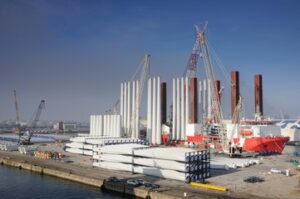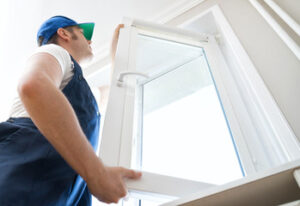Plumbing is the network of pipes that delivers potable water and removes waste from homes and businesses. Local and state authorities regulate it for public health and safety.

Blocked drains can cause flooding, structural damage to homes and unpleasant odors. To prevent this, regular maintenance and cleaning is required. Visit https://www.plumbing-express.com/ for more information.
Keeping your drains clean is one of the best things you can do to prevent clogs and other plumbing problems. This can be achieved by avoiding putting down the drain such items as cooking grease, coffee grounds, and cigarette butts. Instead, save grease for later by pouring it into a can and throwing it in the trash. Throw away coffee grounds, and put your hair trimmings in the garbage (or use them in a garden). Finally, never pour chemical drain cleaners down your drains; they can damage your pipes.
To keep your drains flowing smoothly, try a natural drain cleaner like vinegar or baking soda. Vinegar is nature’s organic solvent and can help dissolve the fats and oils that build up in your pipes. Baking soda is another natural clog fighter that can be used on its own or with salt to clear minor clogs. To use it, drop a cup of baking soda down the drain followed by a cup of hot or boiling water. The resulting fizzing indicates that the drain is cleaning itself. Be sure to flush the drain with a large amount of water afterward. This is especially important after using chemical cleaners. The hot water will help melt any remaining clog material.
Ongoing Drain Cleaning Maintenance
Having the right equipment to keep drains clean helps technicians prevent the need for emergency plumbing repairs. This includes a wide range of tools that can break up and dissolve clogs, as well as powerful equipment to flush the pipes. For example, many maintenance and engineering managers will specify hydro-jetters, which use motors to place water under extreme pressure. The high-velocity forward-facing jets clear the pipeline, while the backward-facing jets scour the inside of the pipe and remove virtually any kind of buildup.
Other tools for maintaining drains include flexible manual snakes with thousands of small hooks to grab and pull out soft clogs such as paper, hair and sanitary products. These and other mechanical tools can reduce the need for chemical treatments, which are toxic and irritate skin, eyes and respiratory systems.
When regular drain cleaning is performed, the risk of sewage backups is substantially reduced. Standing water in a drain line creates a breeding ground for mold, mildew and bacteria that can irritate health issues. In addition, it can also cause structural damage to the walls and floors of a home or building.
A homeowner can make drain cleaning a routine with a few simple steps. For instance, a homeowner can run a pot of boiling hot water down the drain at least once each week to melt away grease and debris. Another way to improve drain performance is by applying a mixture of baking soda and vinegar or an organic-type drain cleaner regularly. These types of products are much safer and less expensive than caustic chemicals, which corrode aluminum, copper and cast iron drains and traps and can leak into kitchen and bathroom faucets.
For those with serious clogs that don’t respond to simple fixes, the best course of action is to call in a professional plumber to perform a thorough drain cleaning. These professionals have the tools and experience to remove even the most stubborn clogs. They also can inspect the condition of a drain line to see if it is in need of repair or replacement. This type of proactive approach saves money, prevents the need for emergency repairs and extends the life of the plumbing system.
Clog-Free Drains
The best way to avoid drain clogs is with routine cleaning. However, if you have a serious clog or persistent smelly drains, it’s time to call a plumber. Persistent or recurring clogs may indicate that there is an issue deeper within the pipes, which requires professional help to resolve.
Kitchen and bathroom drains see a lot of soap scum, food waste, hair, toothpaste, and other drain-clogging materials on a daily basis. That’s why it’s so important to have a nontoxic, homemade drain cleaner that you can use on a monthly basis. Mixing equal parts baking soda and white vinegar will fizz away the sticky stuff that accumulates in your pipes, and it will also deodorize your drains.
If a plunger doesn’t do the trick, it might be time to pull out a drain snake. Richard demonstrates how to do this and explains the different types of mechanical drain cleaners available, including a closet auger (K-3 model manufactured by Ridgid) and a sewer snake (M-18 model manufactured by Cobra Tools).
A sewer snake is an effective tool for breaking up and pushing apart tough clogs like sand, gravel, and slimy bacteria that settle inside long pipe runs. To use a sewer snake, first remove the pop-up drain assembly in the sink. Feed a few feet of cable into the drain while cranking the handle. Once the snake makes some progress, stop cranking and back out a few feet of cable. Repeat this process until the clog is broken up and flushed away.
Investing in a garbage disposal will prevent many of the issues that lead to kitchen drain clogs and slow draining bathtubs. If you’re not ready to get a new disposal unit, try pouring hot water down the drain once a month. This will remove any built-up gunk that’s collected and keep your drains flowing smoothly. A hydro jet is an effective way to clear and clean a clogged pipe but should only be used by professionals as it can worsen the condition of rusty pipes. A drain snake can also be useful for removing grease and other oils that can build up in your pipes.
Call a Plumber
A plumber is a skilled professional who specializes in the installation, repair and maintenance of water fixtures. They can help prevent a minor problem from becoming a major one by responding quickly to service calls and completing repairs efficiently.
A successful career as a plumber requires more than just physical strength. They must be able to think critically and weigh the pros and cons of various solutions when faced with challenging problems. In addition to their technical skills, they must be able to communicate effectively with customers and explain complex issues in simple terms.
Plumbing is a trade that requires a high school diploma or equivalent and extensive on-the-job training, usually through an apprenticeship program that lasts four to five years. Apprenticeship programs combine classroom instruction with paid on-the-job training and are sponsored by unions, employers or the state.
Plumbers must be licensed by the state in which they work to practice their trade. This requires passing a background check and a drug test, as well as meeting education and experience requirements. It’s important to research the licensing requirements for your state, as they vary widely.
You should always choose a plumber who is properly licensed, insured and bonded for your peace of mind and the safety of your family and home. When choosing a plumber, ask for referrals from friends and neighbors who have used them in the past. Also, be sure to check the company’s reputation with local business organizations.
Choosing the right plumber can make all the difference in the quality of your plumbing services. A good plumber will be thorough in his work, listen to your concerns and answer all of your questions. He will also respect your property, making sure not to damage or contaminate your home while working on a project.
A bad plumber will be rude and unprofessional, leaving you with a more expensive repair bill than necessary. Take the time to compare rates and find a plumber who is both affordable and experienced. And remember, the best way to save money on plumbing is to keep it in tip-top shape in the first place!

